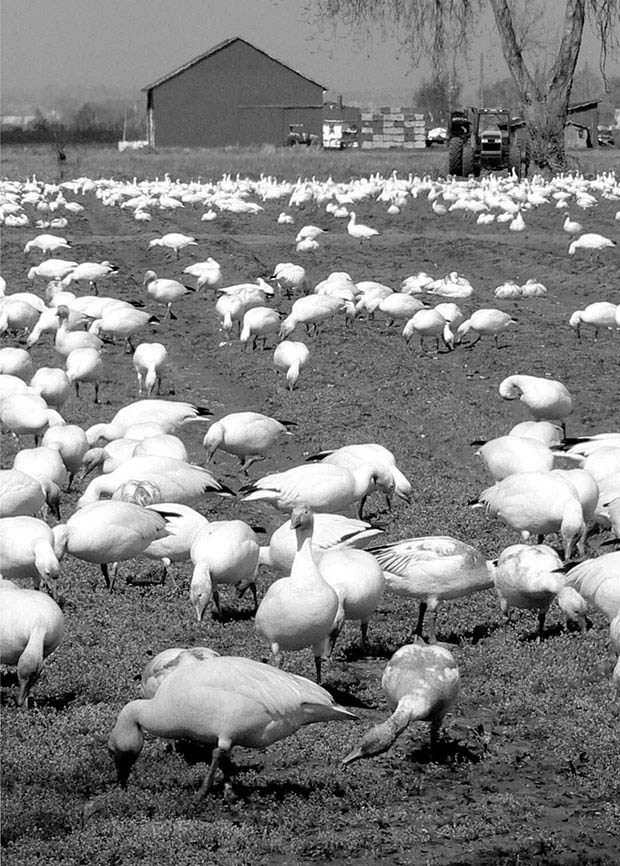The local non-profit organization that works with farmers in habitat stewardship is celebrating its 20th anniversary this year.
The Delta Farmland & Wildlife Trust's (DF&WT) mandate has always been not to acquire lands for habitat, but instead work in partnership with the private landowners to ensure farming and wildlife continues to exist side-by-side. Through a variety of programs, the trust works with local farmers to plant winter cover crops, establish and maintain hedgerows, grass margins, and grassland set-aside habitat. In addition, the trust offers programs for farmers to amend their soil pH, and re-contour their fields for optimal crop production. Bridging the interests of conservationists and farmers together, the programs are tailored to meet specific challenges to agriculture, while also providing valuable food sources and cover for wildlife.
To understand the significance of this partnership, it's important to look back at one of the critical issues that eventually led to the formation of the Trust.
An agricultural community well known for producing a variety of crops, the lower Fraser River delta is also Canada's top Important Bird Area, which hosts large volumes of migratory birds over the winter season. Snow geese, trumpeter swans, widgeon and mallards are some species of waterfowl that migrate along the Pacific Flyway and stopover in Delta to replenish their food stores in order to continue their migration. These internationally significant migratory birds not only feed on the foreshore marshes of Boundary Bay, but also rely on the habitat provided by farmland in Delta and Richmond.
Waterfowl grazing has been prevalent on Delta farmland for decades, however in the late 1980s, farmers began to see increased crop damage and losses as a result of heavy field grazing. Dairy farmers, who depend on perennial forage crops to feed their cattle, found that their grass fields were decimated as waterfowl continually grazed any new growth emerging in the spring season. In addition to the cost of re-seeding their fields, many forage producers were forced to import hay for their cattle, which added to the mounting economic costs caused by inadvertently providing food for huge migrating flocks.
Vegetable producers faced a similar plight.
Due to heavy waterfowl grazing on over-wintering vegetable crops, farmers were met with limitations in the range of crops that they were able to plant. Farmers preferred crops produced early in the season, as processors offered a better price for an early crop.
However, the timing of planting was limited by predation, which meant many farmers who regularly planted vegetables early in the season could no longer do so.
Neither dairy, nor vegetable crop producers were compensated for their economic losses.Delta farmers continue to incur damage from waterfowl grazing, however with the establishment of DF&WT in 1993, producers now receive a cost-share in exchange for planting specific cover crops and grasses to enhance and maintain both soil conservation and wildlife habitat.
The very issue that divided local agriculture and wildlife conservation communities has brought them together to work as partners in stewardship - providing benefits to the entire Delta community and beyond. Learn more about local agriculture at DF&WT's much anticipated community event, "Day at the Farm," at Westham Island Herb Farm on Sept. 7, or visit www.deltafarmland. ca.
File Photo / The Delta Farmland & / Wildlife Trust has been working with local farmers for the past two decades to enhance and maintain both soil conservation and wildlife habitat.;



